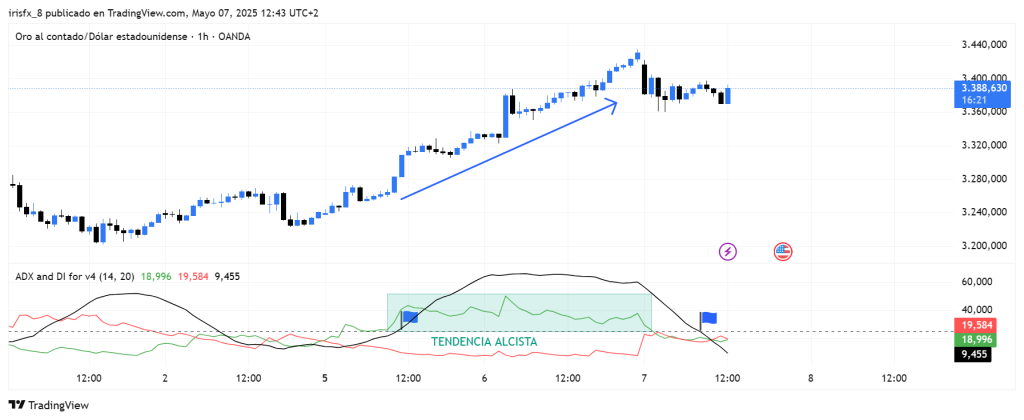Definition #
The ADX is a tool used to determine whether the market is moving strongly or stagnant, meaning it lacks a clear direction. The interesting thing about the ADX is that it tells us whether the current trend (whether up or down) is strong or weak.
Calculation #
This indicator analyzes the prices of the last few candles and calculates how much they’re moving in one direction. From this, it displays a value ranging from 0 onward, and that number tells us how strong the trend is.
It’s typically calculated based on the last 14 candles. The stronger the movement during that time, the higher the ADX value.
Interpretation #
When the ADX value is low (below 20), it means the market has no clear direction and is moving sideways (accumulation). If the ADX starts to rise above 20, it indicates a trend is forming. The higher the number, the stronger the trend. For example, an ADX above 40 indicates a strong market move.
It’s important to remember that this indicator doesn’t tell us whether the price is going up or down, only whether the current movement (whether bullish or bearish) is strong or weak. Therefore, it’s often combined with other indicators that do show price direction.
Example #

As you can see in the image, below the chart is the ADX indicator with two other lines, +DI (indicates buy pressure) and –DI (indicates sell pressure).
The chart shows an upward trend, and the indicator shows how the +DI exceeds the -DI line, indicating an uptrend.
The first flag would indicate the moment to set a buy order, as it is the point at which the ADX exceeds 25 points. The second flag would be the point at which the buy position is closed or a sell position is opened (this would depend on the rules for opening and closing buy/sell positions).
Parameters #

Signal type
The element can operate in two modes. In trigger mode, it provides a signal the instant the element condition occurs. At all other times, even if the condition persists, trigger mode will not provide further signals (until a new condition is reactivated). In filter mode, it will provide a signal as long as the element is generating a signal.
These are the 2 options:
- Filter: while the signal is produced
- Trigger: at the moment the signal is produced.
NOTE: It is recommended to keep only one element with trigger signal type per rule, and the rest of the rule elements (optional) as filters.
Parameters configuration
Periods – Number of periods to consider when giving a signal [default: 14].
ADX Level – Activate the ADX only based on the +DI or –DI lines.
ADX Entry Level – Strength level for the ADX crossover you want to set [default: 25].
Open buy order on – Select buy action, choosing between bullish or bearish signal [default: Bullish signal].
Open sell order on – Select sell action, choosing between bullish or bearish signal [default: Bearish signal].
Modo avanzado: Timeframe – Selecciona el Timeframe sobre el cual se aplicará el elemento. Estas son las opciones:
- Current: This refers to the timeframe associated with the strategy to be validated. For example, if our strategy is associated with the EURUSD in 15 minutes, the current timeframe will be 15 minutes. If we want to use this element with a different timeframe than the one used in the strategy, we can set it with the rest of the options.
- 1 min: 1 minute timeframe.
- 5 min: 5 minute timeframe.
- 15 min: 15-minute timeframe.
- 30 min: 30-minute timeframe.
- 1 hour: 1 hour timeframe.
- 4 hours: 4-hour timeframe.
- 1 day: 1 day timeframe.
- 1 week: 1 week timeframe.
- 1 month: 1 month timeframe.